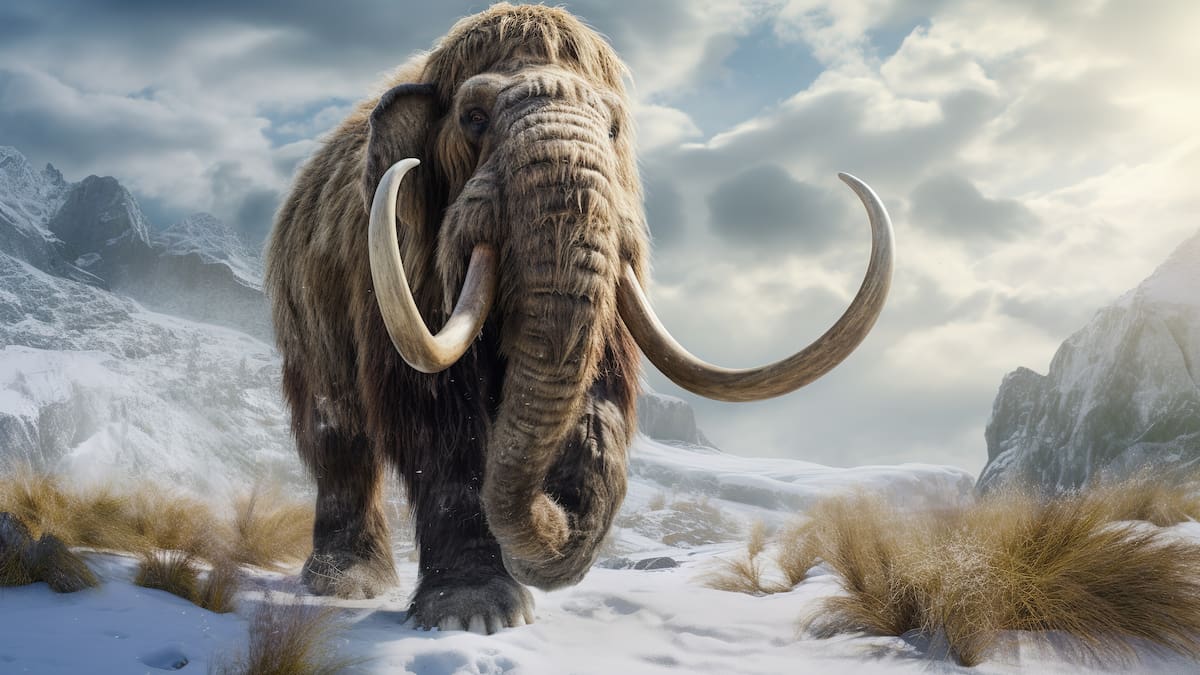In the new study, researchers recovered hundreds of thousands of fragments of mammoth RNA, showing it was possible.
They then connected those to the activity of specific genes in the muscle tissue of Yuka the mammoth, showing genes involved in slow-twitch muscle fibres involved in endurance activities were turned on.
They also found that genes involved in metabolic stress were active, allowing them to speculate about the last moments of this mammoth, which is thought to have been attacked by a cave lion before its death.
“You can imagine a situation where it had been trying to run away from the predator and got attacked,” said Marc Friedlander, an RNA biologist at Stockholm University and one of the authors of the new paper. “It’s kind of stunning we can see this stress response from the active genes.”
The researchers acknowledge that recovering ancient RNA requires specimens with exceptional preservation conditions – in this case by being frozen in permafrost.
How broadly ancient RNA can inform us about the past will remain to be seen as techniques improve and scientists learn more about which samples can be successfully sequenced.
But the new study shows that researchers can gain broader information about past biology, making it possible to reconstruct gene expression in ancient animal tissues, but also ancient RNA viruses such as influenza or coronaviruses.
“The paper is interesting as RNA is traditionally considered too unstable for long-term survival,” Eske Willerslev, an ancient DNA expert at the University of Copenhagen who was not involved in the study wrote in an email.
He noted that inroads had been made into this field, but “this time the authors push it back tens of thousands of years. It’s an important step in getting into ancient RNA studies.”
A ‘hold my beer’ moment
For years, the science of ancient DNA has been growing by leaps and bounds.
Ancient genomes have proliferated, from a diverse menagerie of Neanderthal relatives, Ice Age creatures and people whose histories were not recorded in books.
It also has helped illuminate historical events, such as the volcanic eruption that preserved Pompeii in ash or the final days of Napoleon’s army.
Svante Paabo, a leader of the field, won the Nobel Prize in medicine or physiology in 2022 for his discoveries related to ancient DNA and human evolution. But DNA’s close cousin, ancient RNA, remained on the margins.
About four decades ago, an Italian researcher found RNA in seeds that were thousands of years old.
He published a letter in the journal Nature, responding to Paabo’s work on ancient DNA from an Egyptian mummy with a paper called, “Mummy RNA lasts longer”. Many scientists ignored it. The field began to wake up over the past 15 years – particularly in 2019, when scientists recovered fragments of RNA from the tissues of a 14,300-year-old wolflike puppy.
That study showed that RNA can survive and can be used to distinguish the genes active in different tissues.
“We thought, okay, this is kind of a ‘hold my beer’ moment,” Friedlander said. “We can do this, too. We are good at looking at short RNAs in very, very low amounts.”
Friedlander and his colleagues teamed up with paleo geneticist Love Dalen and set out to take tiny bits of woolly mammoth tissue to see if they could find mammoth RNA in the first place.
They started out with 10 tiny vials with bits of muscle or skin tissue from 10 mammoth specimens, working in a clean-room environment to avoid contamination with modern genetic material.
Three of the mammoth samples yielded ancient RNA fragments, particularly the sample from Yuka. Previously assumed to be a female mammoth, their analysis showed that Yuka had fragments of RNA from genes on the Y chromosome, revealing it was a male.
Tom Gilbert, a researcher at the University of Copenhagen and an author of the 2019 wolf puppy study, said in an email that RNA can only be recovered in samples that undergo specific preservation environments, such as freeze-drying like the mammoths that died in very cold environments – but that ancient RNA has not been a focus because people don’t bother to look for it.
The new paper pushes back the timeline on the oldest RNA by about 25,000 years, he noted, but he said that under the right preservation conditions there’s no reason to think even older RNA won’t be preserved.
“What we want to advocate with this paper is a certain set of rules and methods and suggestions to researchers to guide them – if they want to try,” said Emilio Marmol-Sanchez, one of the study authors, who now works with Gilbert as a postdoctoral researcher at the University of Copenhagen.
He said that this work wouldn’t just apply to prehistoric samples but could be applied to medieval samples to recover a more multidimensional biological picture of past life.
Sign up to Herald Premium Editor’s Picks, delivered straight to your inbox every Friday. Editor-in-Chief Murray Kirkness picks the week’s best features, interviews and investigations. Sign up for Herald Premium here.

